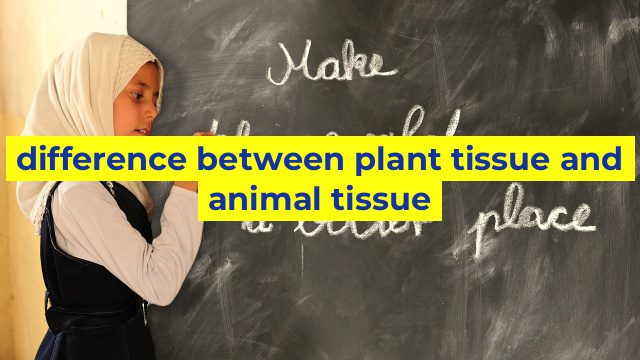The Key Differences Between Plant Tissue and Animal Tissue
When it comes to anatomy, there are significant differences between plant tissues and animal tissues. While both types serve a specific purpose in the life sciences, they function in entirely different ways. Below, we outline some of the key differences between these two types of tissues.
Cell Structure
Plant tissues are composed of rigid, box-like cells with walls made of cellulose, which provides the stiffness and support required by the plant’s structure. In contrast, animal tissues are composed of flexible, round cells that don’t have a wall like cellulose.
Extracellular Matrix
In addition to the fact that plant tissues are composed of cells with walls, they also have a “extracellular matrix” between cells. This extra layer of protection not only helps support the plant’s structure, but it also helps facilitate communication between the different parts of the plant. Animal tissues do not have an extracellular matrix in the same way that plant tissues do.
Functionality
Plant tissues and animal tissues also differ significantly in the way that they function. Plant tissues are primarily responsible for photosynthesis, gas exchange, and water transport. They also help provide support and protection for the plant. In contrast, animal tissues are responsible for a variety of functions, including muscle movement, digestion, and nerve transmission.
Growth
Finally, plant tissues and animal tissues differ in their growth patterns. Plant tissues can grow indefinitely through new cell production, as well as cell expansion. In contrast, animal tissues are limited in their growth potential, as they are dependent on the size of the organism itself.
In conclusion, while both plant tissues and animal tissues serve critical functions in the life sciences, they are vastly different. Understanding these differences can help us develop a deeper appreciation for the complexity and diversity of the natural world around us.
Table difference between plant tissue and animal tissue
Plant Tissue vs. Animal Tissue
| Characteristic | Plant Tissue | Animal Tissue |
|---|---|---|
| Cell Shape | Rectangular, cuboidal, irregular | Round, irregular |
| Cell Wall | Present | Absent |
| Lysosomes | Absent | Present |
| Chloroplasts | Present in photosynthetic tissues | Absent |
| Vacuoles | Large central vacuole present | Small, scattered vacuoles present |
| Tissue Types | Meristematic, permanent | Epithelial, connective, muscular, nervous |


